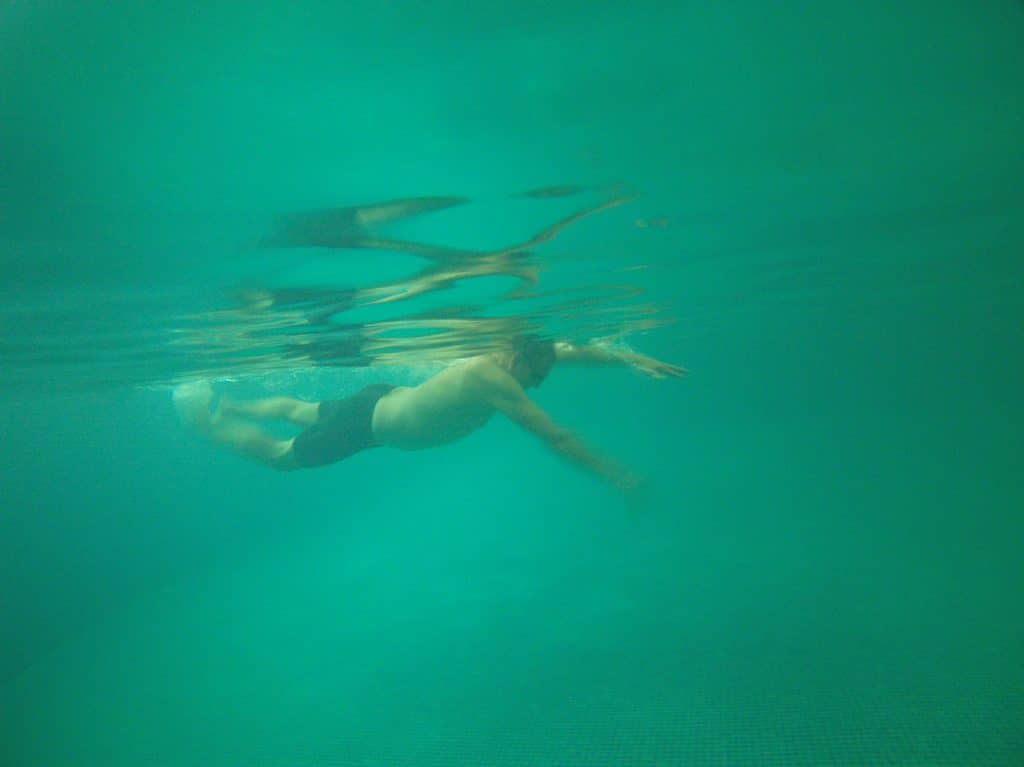For most front crawl improvers, it’s difficult to understand exactly what the hand and arm should be doing under water. It’s even more difficult to know what’s actually happening with our own hand as it passes through the water, from out in front of the head to the leg. And the most difficult thing of all might be attempting to improve the underwater phase without making things worse.
‘Hook the water.’ ‘Don’t drop the elbow.’ ‘Bend the elbow.’ ‘Think of going over a barrel.’ ‘Early vertical forearm.’ Thank goodness no one talks about the s- pattern any more! All these instructions are likely to have us tying our nervous system in knots. But it’s our own fault really, not the giver of the instruction’s.
When I go swimming with my friend Simon, he often observes that while my left arm looks like it’s doing all the right things under the water, elbow remaining high and bending before the hand sweeps back towards the thigh, my right arm tends to move back through the water quite straight.
While I believe him, I don’t feel this to be happening. Both arms feel fine. There’s no more consciousness of the left arm, which seems to be doing what it’s supposed to, than there is of the right, which misbehaves. If I want my right arm to do the right thing, like the left one does, then thinking things like, ‘my elbow should be high/ bent’/ ‘I must send my hand over a barrel’ etc, might just create more tension, which is likely to be the cause of the problem in the first place – tension in the neck and shoulder, specifically.
All those instructions start to make sense if I refuse to ‘do’ them. My elbow does need to be high under the water, so that the hand moving back through it sends me forward. Without a high, bent elbow under the water, my hand tends to move down towards the floor causing me to bob up out of the water.
But there’s no use in panicking about this, trying to get it right. A more patient approach to change is needed.
I find it helpful to think about my elbow being supported, buoyed up, by the water underneath it. As my hand drives forward and down into a glide, my elbow is higher than my hand. I want to treat the elbow kindly now, not bully it into staying high and bending. So I let the water support it, let it hang there, think gentle thoughts about my neck and shoulder and hope for the best.
What I find interesting is that when I’m thinking things like this, Simon confirms it’s looking good. When I try and change things directly, it doesn’t feel good, it feels worse, and he confirms that it isn’t changing.
I guess the secret is welcoming someone’s observation or even an instruction but saying NO to your desire to carry it out by doing something.
Sometimes an image is better than a thousand words and I was pleased to find a Total Immersion YouTube clip on the subject of the catch. Since viewing it, the beautiful image of the underwater phase has stuck in my mind and I’m confident it will help me in my next swim. But this morning I played it again, this time with the audio. Nothing against the words of the coach; they’re spoken clearly, with authority and seem to make perfect sense. But I’m better off without them, only because of how I react in trying to put them into practice. With just the image, my brain has more chance of working out how the underwater phase needs to be. Words and doings set me off on the wrong path. That’s the catch.


